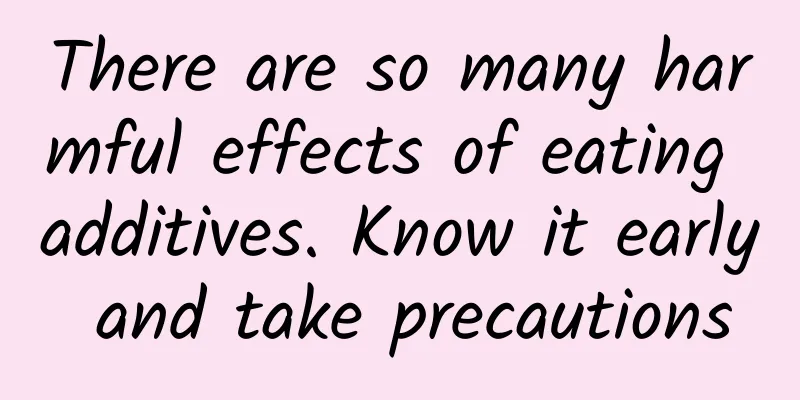How long does it take for allergic purpura to heal?

|
Allergic purpura is a relatively serious disease. The treatment time of this disease is closely related to individual differences. The treatment time of more stubborn allergic purpura is relatively long, even up to several years, which causes great psychological pressure on patients and is also a heavy burden on the family. Patients should maintain a good attitude and face the treatment positively. Only in this way can the effect of the treatment be guaranteed. How long does it take for allergic purpura to heal? This long-term treatment is a slow recovery process, so it is crucial to build confidence and persist in treatment. This treatment is usually divided into two types. 1. Hormone therapy Hormone therapy is not the most effective for general pediatric Henoch-Schonlein purpura. If the patient has symptoms of Henoch-Schönlein purpura and gastrointestinal bleeding at the same time, you can try hydrocortisone drip for two to three weeks. During hormone therapy, you should pay attention to rest, take medicine on time as prescribed by your doctor, eat a light diet, and avoid spicy and irritating foods. If you experience abdominal pain or bloody stools, you need to fast. However, if you also suffer from kidney disease, hormone therapy should not be used. 2. Other treatments In addition to hormone therapy, there are also traditional Chinese medicine therapy or diet therapy. These two therapies have slow effects, but can gradually alleviate the symptoms of allergic purpura and mainly serve as auxiliary treatments. Nursing of Allergic Purpura 1. Psychological care According to the specific circumstances, relevant knowledge about the disease should be explained as much as possible to help the children and their families eliminate their fear, reduce their psychological burden, maintain an optimistic mood, win their trust, enable them to actively cooperate with treatment, and build confidence in defeating the disease. 2. Skin care Observe the shape, number, and location of the rash, and whether it recurs. You can draw a human figure to record the daily changes in the rash. The rash is itchy, so the skin should be kept clean to prevent abrasions and scratches by children. If there is a break, treat it promptly to prevent bleeding and infection. Wear soft, breathable, loose cotton underwear and change it frequently. Keep the bed clean, dry, and free of debris, and avoid using alkaline soaps. 3. Diet care People with allergic purpura should not eat allergenic foods. If purpura is caused by food allergy, such food should be strictly prohibited for life. Common allergens include animal foods such as fish, shrimp, crab, eggs, milk, etc., and plant foods such as broad beans, pineapples, and plant buds. Be careful not to use cooking utensils and tableware that have come into contact with allergens. Eat more foods rich in vitamins C and K. Vitamin C is an essential substance for protecting blood vessels and reducing vascular permeability. Vitamin K can increase the level of coagulation factors, which is beneficial for coagulation and hemostasis. Therefore, foods rich in vitamins C and K should be given. Foods rich in vitamin C include: fresh vegetables and fruits, especially tomatoes, oranges, apples, fresh dates, etc.; foods rich in vitamin K include: spinach, pork liver, etc. Vitamin C and vitamin K are not resistant to high temperatures, so they should not be cooked at high temperatures or for too long. Avoid spicy foods. Be careful to avoid eating rough, hard foods and foods that have mechanical irritation to the gastrointestinal tract, such as fish with thorns, crabs with shells, chicken and meat with bones, etc., so as not to injure the oral mucosa and gums and cause or aggravate bleeding. Children with renal purpura should be given a low-salt diet. 4. Nursing for swollen and painful joints For joint-type cases, the pain and swelling should be observed, the functional position of the affected limb should be maintained, the child should be assisted in choosing a comfortable position, and daily life care should be provided. The use of adrenal cortex hormones is effective in relieving joint pain. 5. Nursing for abdominal pain When children have abdominal pain, they should rest in bed and try to stay by the bed. Observe for abdominal cramps, vomiting, and bloody stools. Pay attention to the stool characteristics, which may appear normal but may be positive for occult blood. Those with bloody stools should record the frequency and nature of their bowel movements in detail and collect stool samples. People with abdominal pain are prohibited from applying hot compresses to the abdomen to prevent intestinal bleeding. Children with abdominal purpura should be given a liquid diet without animal protein and residue. In severe cases, they should be fasted and receive nutrition intravenously. Intravenous infusion of corticosteroids, blood transfusion, etc. 6. Nursing of purpura nephritis Children should have regular morning urine tests after hospitalization. Patients with edema should record urine volume, and family members should be asked to follow up on urine tests for 3 to 6 months when discharged from the hospital. |
<<: Side effects of gonadotropin
>>: What is the probability that a lung nodule is benign?
Recommend
Things to note when having sex with right ovulation
For many women who find it difficult to get pregn...
What are the foods that detoxify and nourish the skin? What foods can help detoxify and beautify your skin?
Poor people pay attention to health care, while r...
The efficacy of drinking Astragalus and Ginseng in water
Everyone should be aware that the medicinal value...
Your child's urine is red
The redness of children's urine is mainly cau...
Early symptoms of cerebral palsy in children and methods of treating cerebral palsy in children
For parents, once they find that their children h...
Treatment of snake ulcer
Herpes zoster is a serious skin disease that ofte...
What causes cholecystitis?
Diseases are very harmful to human health. Theref...
Functions and roles of the thyroid gland
The thyroid gland is responsible for the synthesi...
Men are the backbone of the family, but a sleeping position can ruin their health
Will sleeping posture have "bad consequences...
Does nebulization have side effects on pregnant women?
Nebulization will have certain effects on pregnan...
How to correct a stretched neck
If the neck is always stretched forward, it will ...
Side effects of Dioscorea bulbifera
Chinese medicine is not without side effects, but...
How to treat malnutrition in children
Parents are very worried when their children are ...
How can drinking Poria cocos help remove spots?
Poria cocos is a relatively common Chinese medici...
What causes chest pain during menstruation?
Many women experience chest pain during menstruat...









